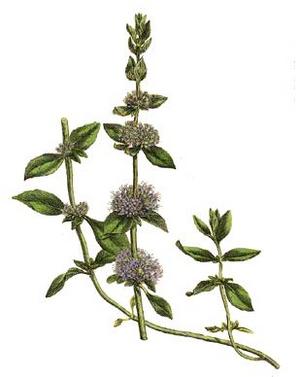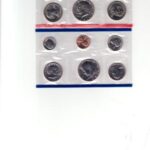I enjoy the website devoted to A Modern Herbal, but since the book was published in 1931, its information on herbs is no longer so modern, and that is especially true for pennyroyal. So, do enjoy the site, but look for more current information as well.
Pennyroyal refers to different kinds of mints, a large family of herbs that all have a characteristic square stem. American pennyroyal blooms in the summer. Despite its mint taste, American pennyroyal has a strong aroma. Native Americans used American pennyroyal for headaches, fevers, and intestinal problems. They also applied pennyroyal to the skin to repel insects, as such nicknames as tickweed, mosquito plant, and fleabane suggest.
American pennyroyal was one of several herbs known as squawmint, because Native American women used it to treat menstrual problems. Women in some Native American tribes reportedly drank hot pennyroyal tea regularly as a method of contraception. It used to be included in the U.S. Pharmacopoeia as one of the herbs to induce abortion.
Although natives of Asia and Europe, European pennyroyal or English pennyroyal have become naturalized herbs in the United States after it was brought to the New World by the British and European colonists. Pliny, the Roman physician who wrote the earliest descriptions of various herbs, in his Natural History noted that pennyroyal could repel fleas.
Pennyroyal used to be considered a treatment for a range of problems, from the intestinal disorders to gout to nervousness. In fact, much as I appreciate the work of herbalists, one problem I find is that no many herbs seem to have been used as all-purpose cure-alls. According the Sloan-Kettering website, the “purported uses” of pennyroyal include: amenorrhea, asthma, bronchitis, cancer treatment, colic, common cold, headaches, induce abortion, inflammation, influenza, insect repel, premenstrual syndrome. stomach and intestinal gas, and toothache.
Pennyroyal is effective when applied externally to repel insects. Some gardeners hang bunches of pennyroyal to repel insects, and pennyroyal oil is included in some commercial insect repellents.
Pennyroyal is considered one of the more dangerous herbs mainly because of the damage it can do to the liver, particularly because of a substance called pulegone. Besides the long list of “purported uses,” Sloan-Kettering includes this warning: No clinical trials have shown pennyroyal to be effective in treating any of the following conditions. Pennyroyal has been found to be extremely toxic and therefore cannot be recommended to treat such conditions.
The same page also includes reports of two deaths related to pennyroyal.
One of the first herbs I ever bought was pennyroyal. I remember thinking, gee, this tea tastes just like insect repellant. Since that time, I have not bought herbs without doing some research on them first.
This information is for educational purposes and not as a recommendation as a cure for any disease. It is not intended as a replacement for the services of a qualified licensed health provider who understands your needs and individual condition.





